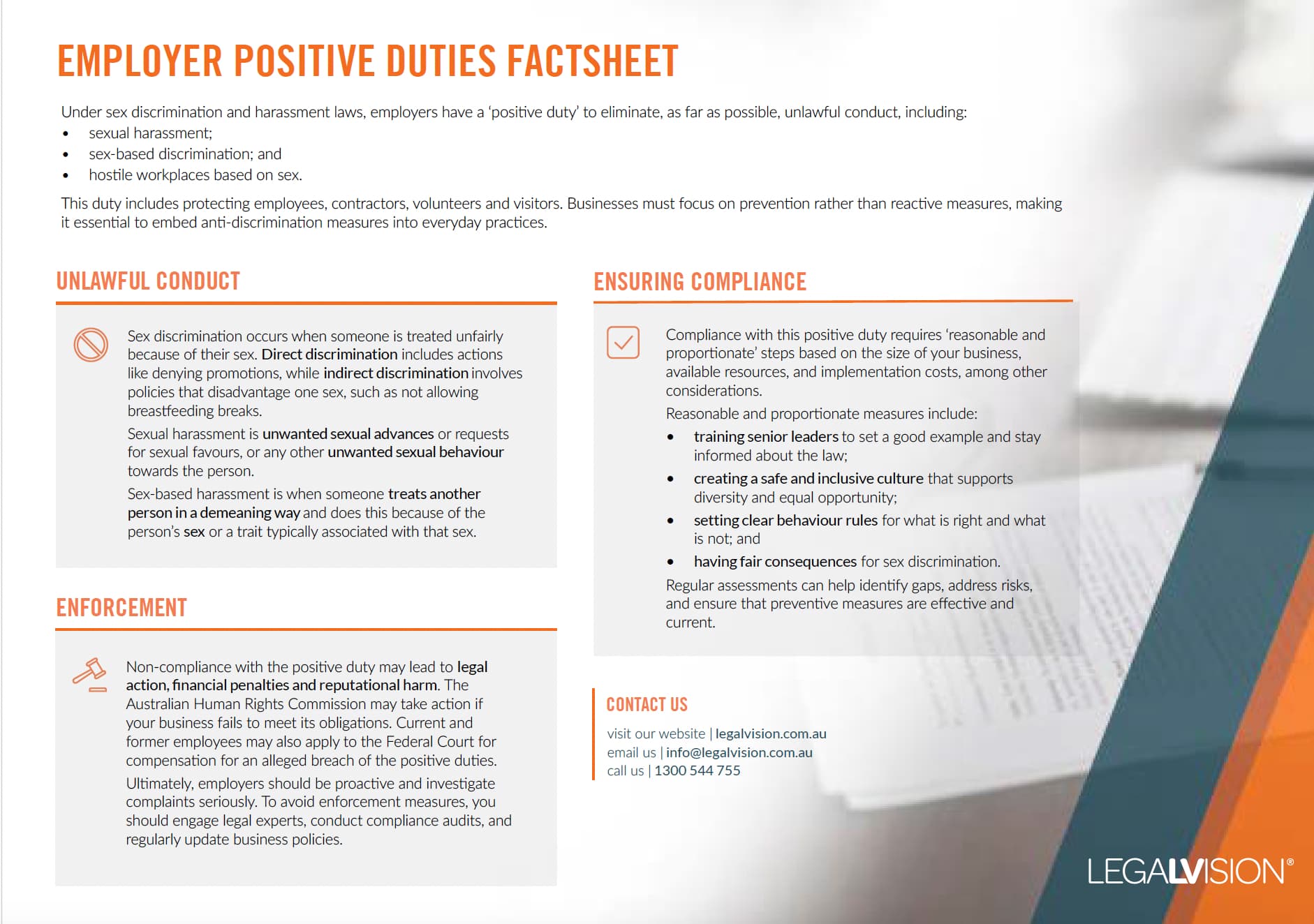In Short
- From 1 March 2025, Queensland businesses must prepare a prevention plan to manage the risk of sexual harassment at work.
- A Fair Work Commission ruling confirmed that reasonable management action, when carried out appropriately, does not constitute workplace bullying.
- Businesses should proactively review their WHS policies to stay compliant with evolving regulations.
Tips for Businesses
Review existing risk assessments and reporting systems to ensure they align with new WHS obligations. Even if not required in your state, developing a prevention plan can help mitigate risks. Ensure management actions are documented and reasonable to avoid bullying claims. Early intervention in performance issues can prevent workplace disputes.
Table of Contents
Officers have a continuous duty to keep their organisations compliant and stay informed about work health and safety matters. This update covers recent developments to help officers meet their obligations and stay up to date with WHS changes.
Legislative Update
From 1 March 2025, the Queensland Work Health and Safety Regulations will be amended to require a person conducting a business or undertaking to prepare a prevention plan outlining how they will manage risk from sexual harassment or sex or gender-based harassment at work.
In order to meet this obligation, a business’ prevention plan must:
- be in writing stating each identified risk;
- identify the control measures implemented, or to be implemented, to manage each identified risk;
- identify the matters considered in determining the control measures;
- describe the consultation undertaken by the business;
- set out the procedure for dealing with reports of sexual harassment or sex or gender-based harassment at work; and
- be set out and expressed in a way that is readily accessible and understandable to workers.
Businesses should take this opportunity to:
- Review Existing Measures: Consider current risk assessments and control measures against the new Queensland standards.
- Enhance Reporting Systems: Develop clear procedures for recording and responding to sexual harassment reports.
- Prepare for Potential Changes: Consider developing Prevention Plans and enhancing control measures, even if not yet mandated in your state or territory.
- Document: Maintain detailed records of all steps taken to prevent and address sexual harassment.
Do All Businesses Need a Prevention Plan?
If a risk of sexual harassment or sex- or gender-based harassment has not been identified, a prevention plan may not be required. This could be the case if you operate your business as a sole trader.
Some further information from the Queensland Government can be found here.

This fact sheet outlines employers’ ‘positive duty’ under sex discrimination laws, highlighting proactive measures to prevent unlawful conduct.
Cases and Incidents
The Fair Work Commission dismissed an employee’s stop bullying order brought against their employer.
1. What Happened?
A graduate employee at the Department of Employment and Workplace Relations filed an application alleging workplace bullying by three supervisors.
The employee’s allegations included:
- being required to attend work at certain times, which they claimed breached the enterprise agreement;
- not being given sufficient breaks during training sessions;
- being reprimanded for arriving late to scheduled meetings;
- receiving an email from their supervisor that they claimed was accusatory and menacing; and
- receiving feedback on their work that they considered condescending and unwarranted.
However, the Department argued that all actions taken were reasonable management practices carried out appropriately.
2. What Was the Outcome?
The Commission dismissed the lawyer’s application, finding that no bullying had occurred and was highly critical of the lawyer’s conduct. Instead, the Commission determined that all actions taken were reasonable management actions carried out in a reasonable manner.
It also found that the employee was not a credible witness, and their allegations were not supported by evidence. Furthermore, the Commission concluded there was no risk of ongoing bullying as the employee had moved to a different team.
3. Key Takeaways
This case provides important insights into how employers can fulfil their work health and safety obligations while effectively managing employee performance. When carried out appropriately, reasonable management action does not constitute bullying and can contribute to a safe workplace. Employers are entitled to set clear performance expectations and address conduct issues.
Continue reading this article below the formQuestions?
If you need legal assistance with a WHS matter or need help identifying an officer, book a consultation call on Prism. As a member, you can request unlimited legal advice consultations.
We appreciate your feedback – your submission has been successfully received.











